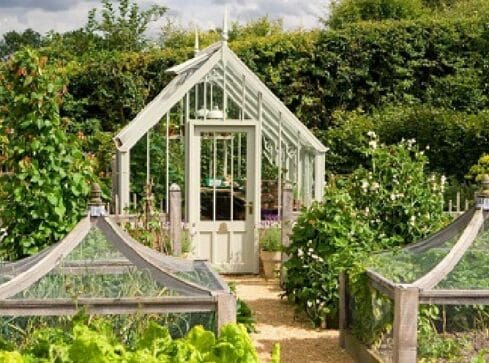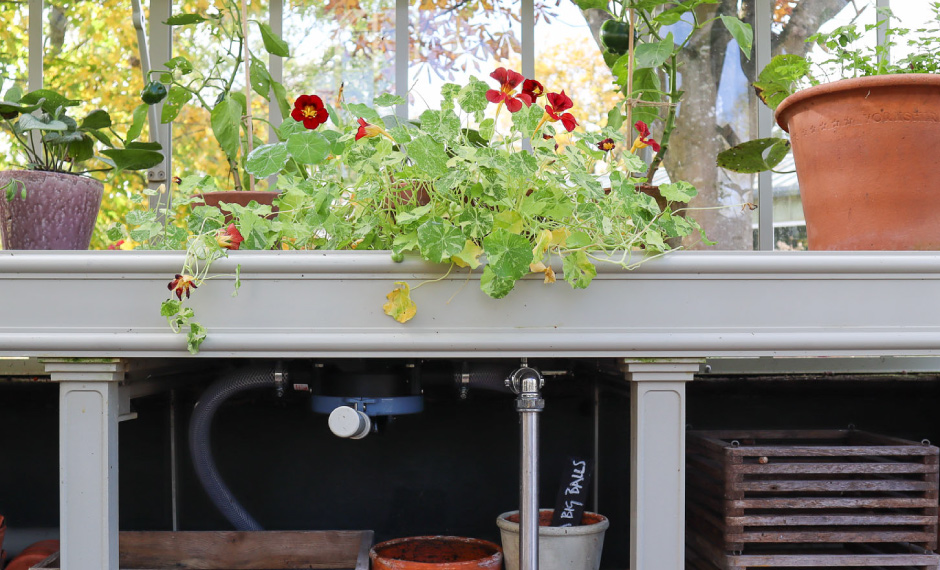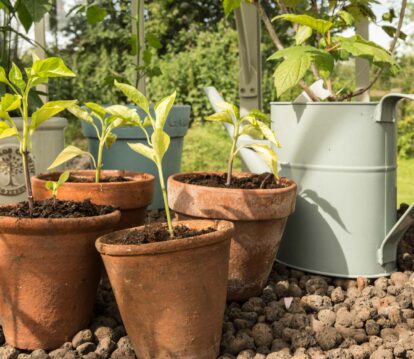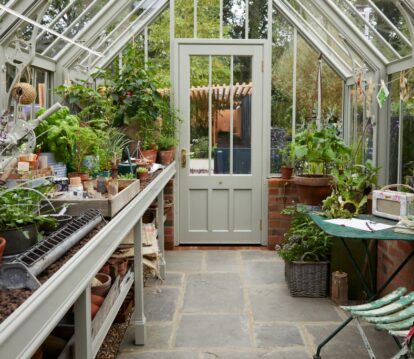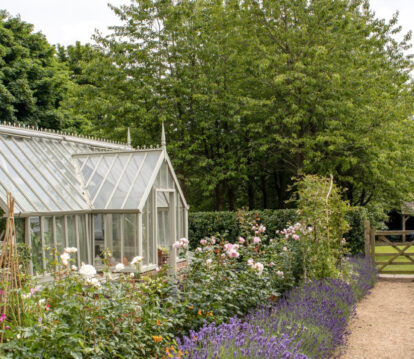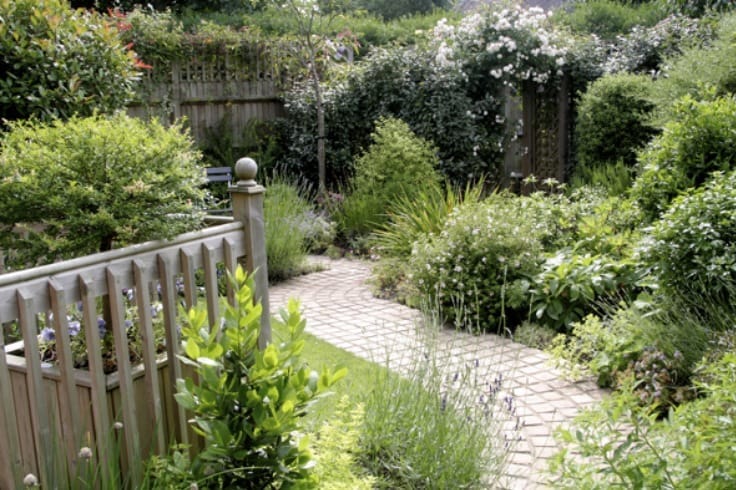
Janet Bligh, a local garden designer who attended our Gardeners’ Question Time recently, has kindly allowed us to share her knowledge and insightful top tips on hard landscaping in the garden. It is a consideration when planning your greenhouse or conservatory as the link to the garden and house should be considered.
Janet writes:
One of the hardest decisions to make when landscaping a garden is which materials to use for paving. There is so much choice on the market these days, it can be quite bewildering however there are a number of factors you should take into account.
Style
If you want your garden to reflect the style of your house and garden buildings then your choices will be restricted (which isn’t necessarily a bad thing!). Typically, with a more traditional style of garden, paving tends to be natural stone flags with a riven (uneven) surface, gravel and/or brickwork – all chosen in colours to complement the house. For a more contemporary look you could opt for natural stone which has been cut with sawn edges and a smoother surface.
Practicality
Make sure that whatever material you choose is frost resistant. Not all bricks will be suitable for paving, and you will be better to choose brick ‘pavers’ which are specifically designed for paving. There are a number of paving stones on the market which undoubtedly look lovely but may not be fit for purpose in a cold frosty climate. Choose carefully.
Slip resistance is also something to bear in mind especially in shady areas. Riven stone can be lethal when it gets wet, so if you are paving on the north side of your greenhouse for example, you may want to choose an alternative such as gravel, or a stone which has been finished with a sandblasted or bush hammered texture. And slip resistance is a particularly important consideration when paving near a swimming pool.
If you are surfacing an area for dining outside, pea shingle or rounded gravel stones will not be the most suitable material where you need to move furniture around. But gravel and shingle comes in many shapes and sizes (and colours). On informal pathways I generally specify a shingle for my clients which has fairly flat stones which bed down well and don’t get kicked around like pea shingle does. Another good alternative (probably most appropriate in more ‘natural’ areas of the garden) is self-binding gravel, often seen on pathways in large public gardens. It’s a mix of aggregate and dust and when compacted forms a hard surface which still drains well.
Loose gravel or shingle is also useful to break up vast expanses of paving and to create a textural contrast in the garden, but however you use it, it will need to be edged with brick, stone or some other form of edging (especially if it’s used next to a lawn where mowing could throw up stones).
Colour
Light-coloured stone looks fantastic when it’s first laid, and it can really lift a gloomy space, but if it’s heavily used it will soon start to look dirty, and in shady areas it will go green with algae after wet periods. So bear in mind whether you should seal the paving or how you will be able to clean it effectively. Jet washing works well but can be damaging to mortar joints. The colour of natural stone will change as it weathers, so if you want to avoid that, you may prefer to choose one of the many ranges of concrete paving on the market.
Scale of paving units
Bear in mind that if you are paving a curved path or terrace, the stone you choose should be either of a scale small enough to work well in a curved pattern, or else be suitable for cutting. Small units such as brick pavers or stone setts work really well in this situation but they are labour-intensive to lay. Stone flags are generally quicker to lay but if they need cutting to size, that will add to the labour costs. And if you need to cut your flags or slabs to fit your space, make sure they are suitable. If you are using concrete slabs where the surface colour does not run through the entire slab then any cut edge on show will look awful. If you choose natural stone which has been finished with a rounded (or ‘tumbled’) edge, adding cut edges in to the mix may not sit right.
See before you buy
Before you make your final decision, I would urge you to visit your stone merchant or quarry and if possible see the stone laid out en masse beforehand to get a real feel for how it might look in your own garden rather than in a brochure or as a small sample. This is particularly important if you are considering using Indian Sandstone which can have massive variations in pattern and colour. And if possible, see what your stone looks like in both dry and wet weather as it can alter quite dramatically. Understand exactly what you are buying before it’s delivered!
There are a number of large companies which supply stone throughout the UK but you will also be able to buy stone from local quarries, and if you are looking for a material to complement your house then local stone will often be the best option. Not only that but you can specify the surface finish you want, plus there’s the added advantage of reduced mileage for transportation, as well as knowing that you are supporting a local business rather than using stone that has been shipped half way around the world.
For more information about Janet Bligh and her practise;
The Old Garage, Stoner Hill, Steep
Petersfield GU32 1AG
Office: 01730 261712 / 0844 4172520
Mobile: 07941 472486


